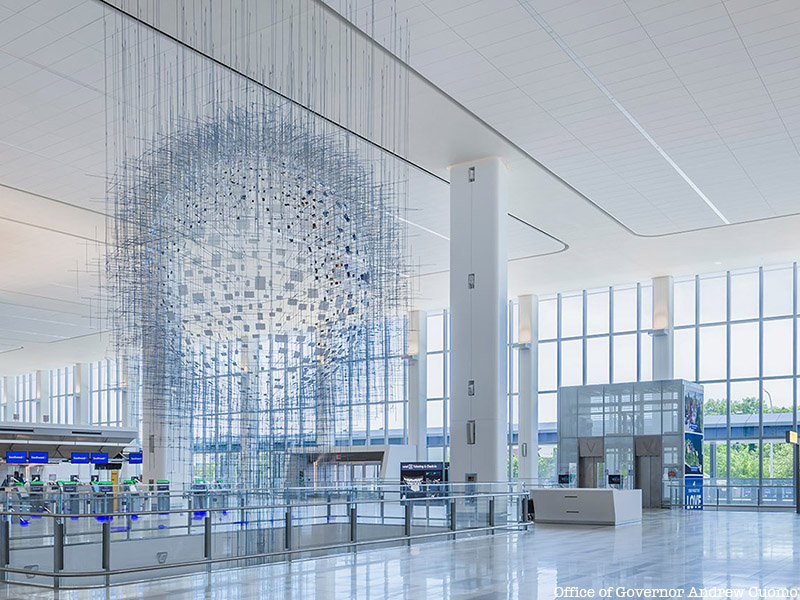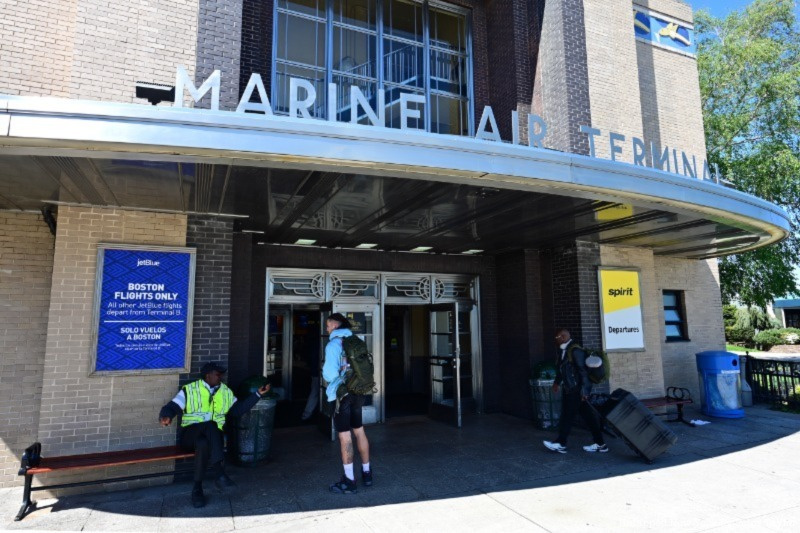
LaGuardia Airport in Queens, named after New York City Mayor Fiorello La Guardia, is one of the busiest in the country as a top hub for Delta Air Lines and American Airlines. By the early 2000s, the airport’s reputation was perhaps at its lowest due to dirty facilities and inferior customer service metrics. In recent years, both Terminals B and C opened to the public after major renovations, while Terminal A retained its decades-old architectural features from its time as the Marine Air Terminal. The new terminals helped LaGuardia’s reputation improve dramatically. In March 2023, LaGuardia’s Terminal B was named the World’s Best New Airport Terminal and the terminal received the first five-star rating for an airport terminal in North America from Skytrax, the leading authority in airport experience.
About a dozen new art projects were commissioned and installed at the new terminals as part of these renovations. This makes LaGuardia Airport an art museum in itself, housing works from a 1940 mural to (soon) a 1960s sculpture that hung at Lincoln Center to contemporary installations by local artists. Here is an art guide to LaGuardia Airport, divided into three parts for Terminals A, B, and C.
Terminal A: Flying Fish motif and other Art Deco features

The Marine Air Terminal was designed in the Art Deco style by William Delano, who worked primarily in the Beaux-Arts tradition and designed Oheka Castle on Long Island. The main terminal consists of a circular core with a three-story entry pavilion that includes a canopy and a large set of doors. The brick facade was originally painted buff, a light brownish yellow with black details, though, by the 1980s, it had been repainted beige. The building was designed with elements of wedding-cake style, which has distinct tiers and setbacks. The building also houses two observation decks and two wings, where passengers would board and exit seaplanes.
The rotunda has light-gray marble floors and wooden benches with arms depicting propeller blades. The lower portion of the rotunda wall is a dark green marble below the signature Flight mural. The wall is divided into 14 bays for stores and ticketing offices, and the second floor is used to house staff offices for meteorologists and radio technicians. Though perhaps the defining feature of the entire structure is the frieze on the exterior of the building that depicts flying fish. The yellow flying fish are accented by a background of light and dark blue waves in direct reference to flying boats. The frieze contains about 2,200 individual tiles.





